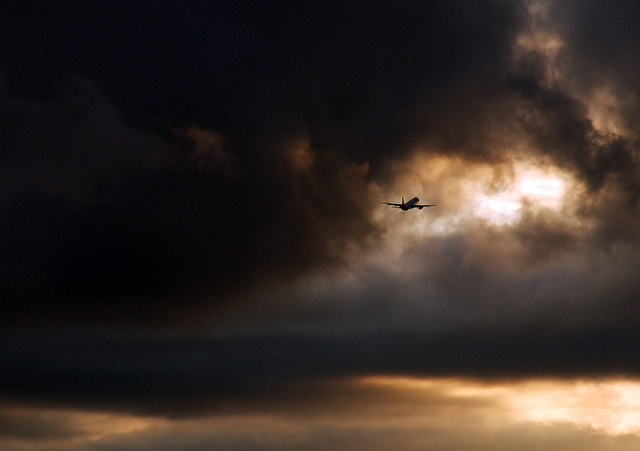You’re cruising 30,000 feet above the ground in a private jet, enjoying a cup of coffee or reading a book, when the plane starts to shake. When you’re high in the sky, the experience may seem unsettling or scary. It’s no wonder that turbulence is one of the greatest concerns of anxious travelers. While the patch of “rough air” might rattle your nerves, it is generally harmless. By having a better understanding of turbulence, you will feel more at ease when the air gets choppy.
What Causes Turbulence?
In fluid dynamics, turbulence is a flow regime that undergoes chaotic changes due to changes in flow velocity and pressure. In simpler terms, the phenomenon is a disturbance in a fluid. When you’re on a plane, the fluid is airflow. When turbulence occurs, unsteady vortices appear and interact with one another, increasing drag and friction, and causing the bumps you feel.
In general, the causes of turbulence are:
- Thermal: Warm air rises through cooler air, which occurs with cloud formations.
- Shear: The border between two pockets of air that move in opposite directions, like when a pilot flies through a jet stream to catch a tailwind.
- Mechanical: The terrain, such as a mountains or buildings, changes the flow of air and may produce oscillation. Mechanical-related turbulence usually occurs during takeoff or landing.
Turbulence in the air is similar to ocean currents. If you drop a rock into the waves as they roll in and out, water will ripple away from the rock, causing turbulence. A big rock under shallow water will cause ripples, or turbulence. Seawalls, large rock formations and docks disturb the natural flow of water, causing turbulence. If you’re in a kayak and a larger boat passes by, the wake causes turbulence that you can feel.
What about Air Pockets?
Air pockets imply the involvement of a vacuum. When you’re flying, you will not encounter vacuums, or air pockets, in the air. When you sit in the jet cabin, the jet’s movements feel exaggerated.
In the air, turbulence is similar to waves in the ocean when you’re on a boat. The waves cause the boat to move up and down, but are harmless. Bigger waves in the water are like greater disturbances in airflow, causing greater vertical movements and giving passengers an “air pocket” sensation. Heavier turbulence, like big waves, do not last long. The main difference between being in a boat in the water and on a plane in the air is that the air will not swamp a plane, as water may do to a vessel.
Is Turbulence Dangerous?
For the most part, turbulence is not dangerous. Encountering turbulence may only become a hazard if you find yourself out of your seat, not buckled into your seatbelt or not stowing items properly. The turbulence you feel at cruising altitude is similar to turbulence you feel at low altitudes; the only difference is the cause.
On chartered flights, pilots try to avoid turbulence wherever possible. If they anticipate a rough patch, they will let the crew know so they can take the necessary precautions to secure the items in the cabin and ensure passenger safety.
Can Pilots Always Detect Upcoming Turbulence?
No, not always. Pilots use cockpit radar, weather reports, reports from other pilots and other instruments to monitor the weather, allowing them to know about upcoming turbulent conditions. The type of turbulence that pilots cannot detect is “clear air” turbulence, or CAT, which occasionally occurs in clear, cloudless skies. However, pilots are aware of factors that cause CAT and take measures to prevent encountering it.
Up to 95 percent of the turbulence that air travelers experience is considered “light.” Aircraft are built to extreme safety standards and designed to withstand extreme situations. They can endure more turbulence in the air than you’ll ever experience. If you ever feel uneasy or anxious before a flight, express your concerns to the crew to learn more about the extensive safety precautions taken and tips about what to do if you encounter bumps in the air.

